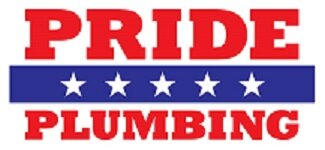Video Inspection
Rochester Plumbing Video Inspections
Using the Latest Technology to Quickly Find & Fix Your Issue
Pride Plumbing of Rochester is the best in the business when it comes to handling basement flooding in Rochester and the surrounding neighborhoods. As much as we love being there in an emergency, we hate to see our customers struggling with the aftermath of a flooded basement. Let us help prevent disaster before it strikes.
How a Plumbing Video Inspection Works
Our cutting-edge Rochester video inspection services lets you know if there are cracks and breaks in your lines, or roots and clogs impeding the flow of water and sewage away from your house. Having storm water back up into your basement is bad enough, but did you know that the potential also exists for sewage to back up as well? It can happen and when it does, it is stressful and costly to resolve.
Think you can’t afford a quality video inspection? Let us give you an upfront quote then compare it to the cost of flood damage repair. We think you’ll agree the benefits far outweigh the cost!
Benefits of Video Inspection
Pride Plumbing of Rochester uses Ridgid video inspection equipment to visually inspect the insides of your home's drain pipes. The use of the video inspection camera is incredibly effectual in determining the exact cause of home flooding including clogged and broken drain tiles in the basement and storm drains that are illegally connected to the sanitary drains.
Other benefits of video inspection include:
Giving homeowners visual documentation of the issues below ground
Allowing us to map out exactly where on the property the storm and sewage drains are located
Saving customers time and money because we get to rectify the situation cleanly and quickly
Minimizing the disturbance to a property’s beautifully landscaped yard and bricked walkways
Once we’ve confirmed the cause of your drainage problem, our Rochester video inspection service experts can work on a solution right away. We masterfully repair irregular storm drain and sanitary drain connections by inspecting the lines and determining where the illegal connection is. We then remove the old underground storm trap and replace it with new, straight pipe directed into the appropriate storm drain. This not only restores proper drainage in the home but also brings your plumbing back into compliance with the local building code. For tough clogs like mud and roots, we use a cutting-edge water jetting machine to clear the existing drain or sewer line.
Prevent Water Damage with Regular Inspection
The unfortunate reality is that Pride Plumbing of Rochester responds to water or sewage flooding several times a week. Most of the time, these floods could’ve been avoided with some pretty simple preventative steps like a video inspection and maintenance. At the very least, homeowners should call for backwater and check valve installation.
If you’re considering purchasing a home in the Rochester area, a general home inspection does not include a video inspection of the drain lines.
Contact us if you have reason to believe there might be potential for flooding due to:
Watermarks on walls
Mold and mildew issues
Sand or silt on basement floors
Having a home in a low-lying area
With our video inspection services, we can offer you assurance that your drainage system is clear and functioning properly. If it’s not, we can fix it. Understanding how sanitary and storm drains work is key.
Dial (585) 271-7150 or request an appointment online. We would be happy to add you to our growing list of happy customers in the city of Rochester, Pittsford, and the surrounding areas!
FAQ
A storm drain and a sanitary drain can be easily confused. However, the difference between the pipes is extremely important. If these drains are confused with one another, it can have damaging effects on the systems built within them as well as on the environment.
A storm drain is designed for carrying rainwater or melting snow. You can find these built into roadside curbs, alleys, or basement floors. They often carry this water through an underground system that ends up in nearby rivers or creeks. A storm sewer contains untreated water. This means that the water that flows into the gutter goes into a storm drain directly into a natural body of water, without anything being done to it.
Sanitary drains, or sanitary sewer systems, carry sewage from underground pipes to a wastewater treatment plant. These originate from bathrooms, sinks, kitchens, and other plumbing sources. Before the water is released from the source, such as rivers, it is treated at the wastewater treatment facility. There are standards and regulations mandated by the National Pollutant Discharge Elimination System (NPDES) to make sure that the water is safe enough to discharge after it is treated.
We need to keep hazardous material and debris out of the storm drain and it is essential to keep rainwater out of the sanitary drains. Motor oil, gasoline, paint, and cleaners can damage our environment and also be harmful to wildlife. Items like grass clippings, leaves, or garbage can clog up storm drains and potentially cause flooding. Avoid littering, repair vehicle leaks, recycle motor oil, properly dispose of hazardous waste, and never pour anything but water into a storm sewer drain. We all want to be happy and healthy individuals while also taking care of our environment!


